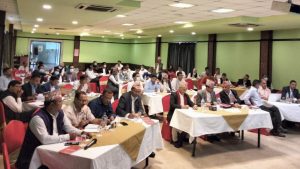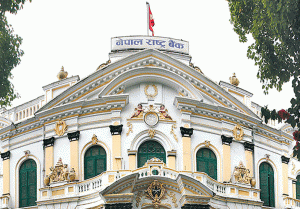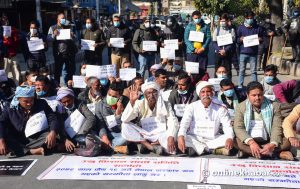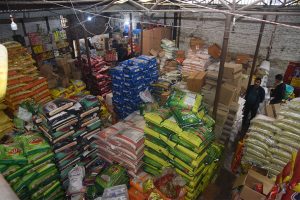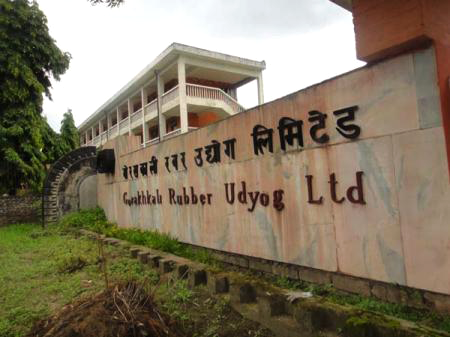
In the annual budget plan for 2022/23, the government announced it would try to restart government factories that have been shut down for different reasons.
To identify which government factories can be restarted, Minister for Industry, Commerce and Supplies, Dilendra Prasad Badu has been visiting old dormant factories regularly.
Badu, along with a team, is trying to find the right model to revive these factories, most of which were shut down after the introduction of the economic liberalisation policy in the 1990s by leaders tied with the Nepali Congress. But, this is not the first time the Nepali Congress-led government is trying to revive these factories.
Since the Maoist insurgency ended in 2006, every year, there have been talks of reviving these old government factories. But, if you look at the list of reports prepared, it all looks like a publicity stunt for political parties to gain popularity. So, stakeholders doubt if the government will walk the talk this time.
Hetaunda’s case
Take Hetauda Textile Mill for example. This year’s budget plan states that people holding public office will wear clothes made from the cloth in the mill. This is not the first time the government has tried to revive the mill shut down in 1999. First efforts were made to revive it in 2007 and its operation produced 35,000-metre cloth.
Chief of the Hetauda Industrial District, Rajendra Kandel, says things looked positive when Baburam Bhattarai was the finance minister, but due to political interference, the mill could not be revived. People were very excited that reviving the mill would generate a lot of employment. But, their excitement did not last.
When Bhattarai became the prime minister in 2012, his cabinet decided to merge the property of the Hetaunda factory with the Industrial District Management Limited as a share investment. That made things almost certain that the mill would not be revived.
In 2016, when late Nepali Congress leader Nabindra Raj Joshi was the minister for industry and commerce, there were talks about reviving the mill yet again. He had even formed a committee to study the possibility.
It was during then, that Nepal Army also showed interest in starting the mill. But, as things did not go as the government had planned, the government factory remained in a dormant state.
Then Minister for Industry and Commerce, Matrika Prasad Yadav, also asked experts to prepare a report to revive the mill in 2019. The team had even said that the mill could be revived and had asked Nepal Army if it was interested in that.
The report had stated it would cost Rs 300 million to revive the mill and had suggested different ways the government could do so. One plan suggested Nepal Army bear all the costs and the other was a joint partnership between the government and Nepal Army. The report further stated that some machines could be repaired and used while new machines were necessary to operate the mill efficiently.
“We’ve never been able to choose between reviving it or starting a new factory. I heard a new committee has been formed to study if it can be revived,” says Kandel.
He says the building and machines in the mill are all old. Currently, the mill acts as an Armed Police Force barracks.
“If we restart the mill, they will be relocated,” says Kandel.
Perpetual priority
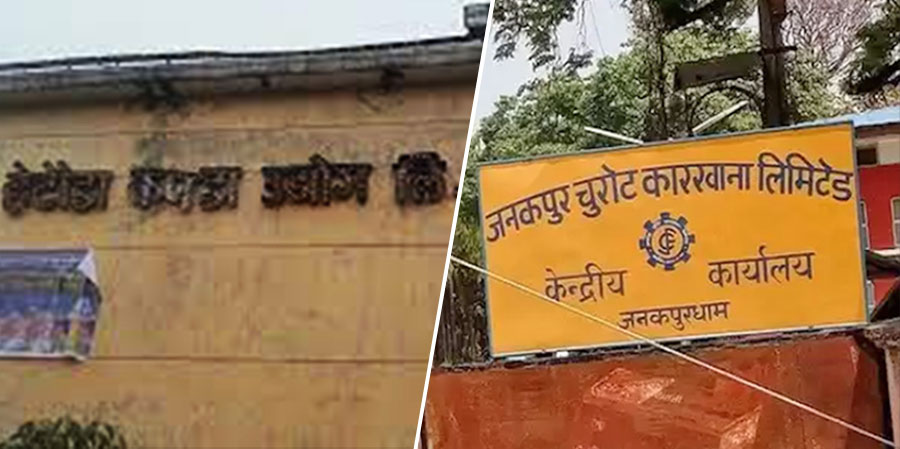
Other government factories are in a similar state. In July 2021, Minister Badu visited a cigarette factory in Janakpur and talked about reviving it too.
In 2017, Minister Matrika Prasad Yadav announced that Janakpur Cigarette Factory would restart again. The factory has been shut for over a decade and the property houses the residence of the chief minister and ministers of the Madhesh province now.
“I’ll request the province officials to relocate it elsewhere,” Yadav had said. Following that, he even formed a committee to revive other government factories in the area.
Badu is also following in Yadav’s footsteps. What the government wants to do by reviving a cigarette factory is unclear, but the people of the province are happy about the news.
Lekh Raj Bhatta, who followed Yadav as the industry minister, also repeated the same thing. He too wanted to revive the factories in Janakpur. He even formed a committee to study the possibility of reviving the factories.
The six-member team was led by former secretary Deepak Subedi and was tasked to identify dormant government factories, classify them and provide suggestions to the government on which ones could be revived and what it would take to revive them. The committee took four months to prepare a report.
Inaction in action
Subedi says the committee told the government that almost all dormant factories could be revived. But, as Bhatta was removed as the minister, things did not move forward as ministers became tourists.
Anil Jha was the industry minister for only 11 days while Gajendra Hamal was in office for only two days.
Then, the ministry came under Prime Minister Sher Bahadur Deuba who did not speak a word about this. But once Badu became minister, the talk of reviving old government factories once again resurfaced.
According to officials at the ministry, almost all ministers have said they want to revive dormant factories. Despite that, no factory has been revived in the past five years.
Apart from Nepal Aushadhi Ltd, which started to produce paracetamol, ORS and sanitisers, other government factories are still in a sorry state.
The ministry states that 12 government factories and utilities have been privatised and liquidated. There are six more that were privatised, but even those are not under operation.
Since last week, Minister Badu is in a visiting spree to these dormant factories. He has already visited Biratnagar Jute Mill, Janakpur Cigarette Factory and Hetauda Textile Mill. After his visit, he has been claiming that these government factories can be restarted. He also said that a modality had been prepared to restart some factories.
“These can and will be revived. We are still working on who will run it. The government, the private sector, a public-private partnership or a third party who will look after the management side. We’re looking at all of these because we will run it,” says Badu. “We are also talking to the local industrialists to do this.”
What is the ministry doing?
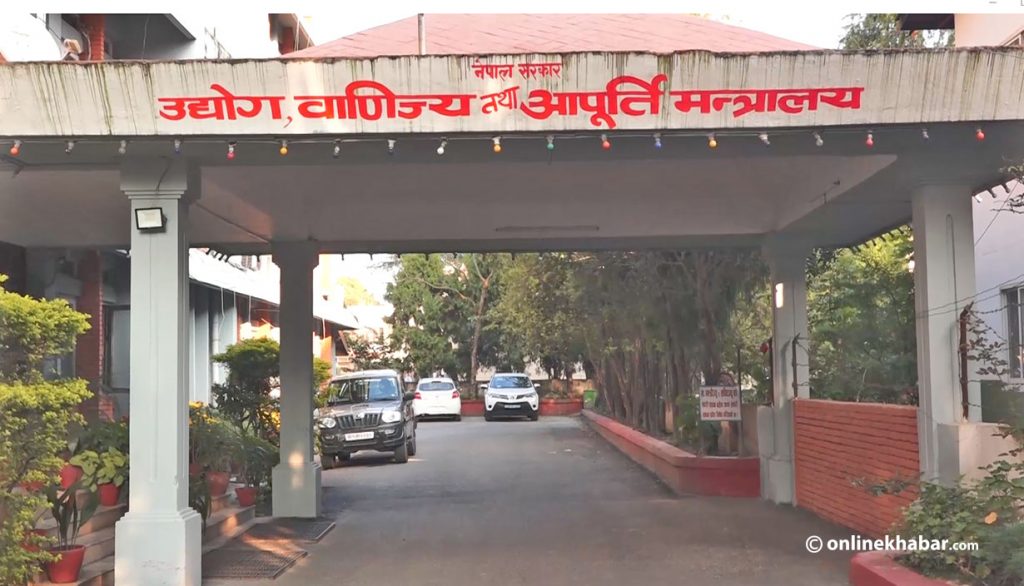
Secretary at the Ministry of Industry and Commerce, Arjun Prasad Pokharel, says the ministry is also planning to dissolve government factories if there are no ways to revive them. He says the ministry wants to revive factories to help the government cope with the trade deficit.
“We talked a lot. But, this year will walk the talk,” says Pokharel.
Last year, the ministry’s joint secretary Chandra Kala Poudel led a team to study dormant factories. The team came up with three ways to revive them.
The first suggestion stated giving the government factories to the private sector. The second was forming a public-private partnership. Lastly, the team also suggested that the government should nationalise land and buildings and sell the machinery and other equipment.
Following that report, almost all joint secretaries of the ministries are currently studying each factory in detail.
They are looking at what type of technology these government factories have and if they can be repaired. Once this is done, the ministry will then discuss the modality. This decision will be made by the cabinet.
Priority list
One factory that the ministry wants to revive at all costs is the Gorakhkali Rubber Industry as it believes there is enough demand in the market for products that could be produced there.
Another factory it wants to revive is the Butwal Dhago Karkhana. Since most of its machines are not in a bad state, the ministry feels it could outsource the factory to a foreign firm and start it.
Another one the ministry is adamant to start is Janakpur Cigarette Factory. It is planning to give the factory a makeover as it wants to create a new brand, issue a new licence and start it, says Pokharel.
But, they are just talks. The ministry does not have a concrete plan for reviving dormant government factories. Why? Deepak Subedi says politicisation is the answer. He believes it will be hard to implement the plan as there is systematic politicisation in Nepal’s industries.
“Everyone will be hired based on political connections. And, that in the long run will kill these government factories. That is what happened in the past and if we don’t learn, that will happen again,” says Subedi.
This story was translated from the original Nepali version and edited for clarity and length.






